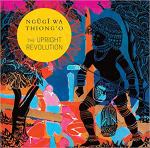
|
| Name: _________________________ | Period: ___________________ |
This test consists of 15 multiple choice questions and 5 short answer questions.
Multiple Choice Questions
1. What is another creature humans are said to have been faster than at the start of the story?
(a) Leopards.
(b) Sloths.
(c) Dinos.
(d) Butterflies.
2. What does Legs say about Arms' "long slim fingers" (16).
(a) They are useless.
(b) They are too long.
(c) They are quite useful.
(d) They are clearly starving.
3. What do the other body parts begin to do as a result of their envy of Legs and Arms?
(a) They begin to plot against legs and arms.
(b) They ignore legs and arms requests.
(c) They create a body that does not need arms and legs.
(d) They shut down.
4. Which body part "borrowed" (15) and put to action the plan against Legs and Arms?
(a) Eyes.
(b) Brain.
(c) Ears.
(d) Tongue.
5. What phrase is used to describe what the other body parts no longer wanted to lend to Arms and Legs?
(a) Their sensory expertise.
(b) Their singular beauty.
(c) Their secret powers.
(d) Their special genius.
6. What body part developed the plan to put Legs and Arms against each other?
(a) Mouth.
(b) Brain.
(c) Eyes.
(d) Tongue.
7. For how long do Arms and Legs debate which of them is better?
(a) Months.
(b) Weeks.
(c) Years.
(d) Days.
8. Which body part came up with the idea for the contest?
(a) Mouth.
(b) Brain.
(c) Legs.
(d) Arms.
9. How is Legs and Arms relationship described?
(a) Dynamic and efficacious.
(b) Discordant and enraging.
(c) Democratic and egalitarian.
(d) Diplomatic and easygoing.
10. Who is said to have walked on arms and legs at the start of the story?
(a) Fish.
(b) Humans.
(c) Rabbits.
(d) Dinosaurs.
11. What does Ears do during the contest?
(a) Primes themselves to hear the slightest sound.
(b) Keeps scores.
(c) Tells everyone to stay silent.
(d) Makes sure nobody aids Arms and Legs by instructing them.
12. What is one creature humans are said to have been faster than at the start of the story?
(a) Sloths.
(b) Hares.
(c) Caterpillars.
(d) Zebras.
13. What are some other corresponding parts on Legs and Arms?
(a) Elbows and knees.
(b) Shoulders and hands.
(c) Hips and wrists.
(d) Ankles and hips.
14. With what phrase does the story begin?
(a) Long ago and far away.
(b) In a far away time.
(c) Once upon a time.
(d) In a far away land.
15. Why do other body parts become "green with envy" with regard to Legs' and Arms' relationship?
(a) Because they think they are better than other parts.
(b) Because they ignore the other body parts.
(c) Because they want to be able to walk and hold things.
(d) Because of their seamless coordination.
Short Answer Questions
1. What use can Legs and Arms borrow from Nose?
2. What body parts are described as being closer than other organs?
3. Arms brags that which part of them are superior to the Toes?
4. Where does the contest between Legs and Arms take place?
5. What use can Legs and Arms borrow from Mouth?
|
This section contains 471 words (approx. 2 pages at 300 words per page) |

|




